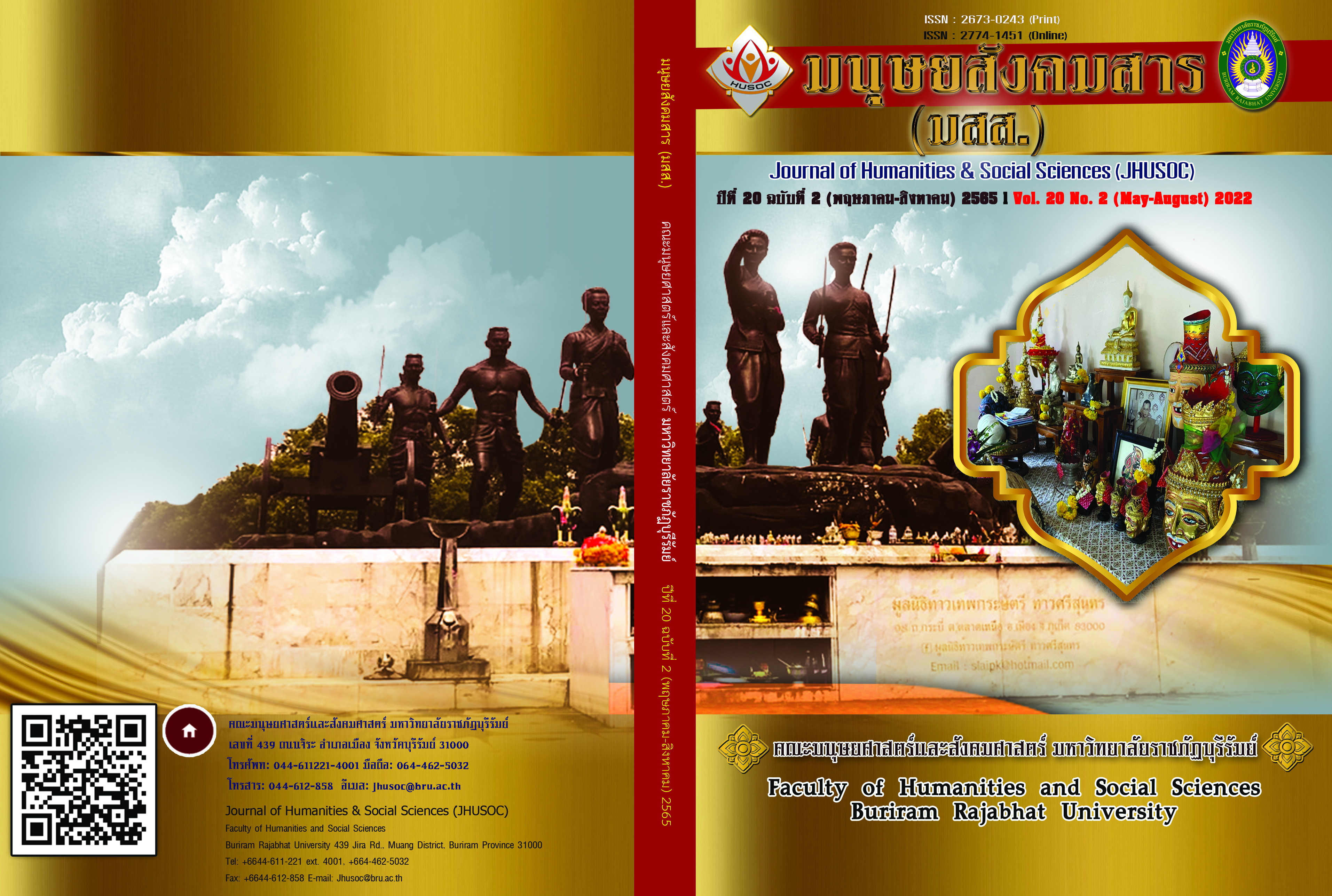Activity-Based Learning Management Integrated with Technology to Promote Students' Innovativeness and Creative Products
Main Article Content
Abstract
Activity-based learning is a cognitivist learning theory which is part of the constructivist learning theory following the learning-by-doing concept coined by John Dewey. In essence, this learning approach seeks to equip learners with the abilities to autonomously construct bodies of knowledge by connecting previous and new knowledge and experiences, to explore new knowledge when needed, and to maintain attentiveness when engaged in learning. Furthermore, learners are projected to improve their eagerness to learn and engage in authentic experiences. To implement activity-based learning, activities should be designed to enhance predetermined knowledge, skills, competencies, and desirable characteristics. Technology is also a vital instrument for 21st century learning as it helps optimize learning effectiveness. To cultivate innovators and enrich creative products, technology could be incorporated into activity-based learning in six steps: 1) providing stimulation and experience, 2) introducing new knowledge, 3) organizing activities, 4) presenting work products, 5) sharing knowledge, and 6) improving and implementing. Technology should also be utilized in every step when teachers and students participate in activities.
Article Details

This work is licensed under a Creative Commons Attribution-NonCommercial 4.0 International License.
เนื้อหาและข้อมูลในบทความที่ลงตีพิมพ์ในวารสารทดสอบระบบ ThaiJo2 ถือเป็นข้อคิดเห็นและความรับผิดชอบของผู้เขียนบทความโดยตรงซึ่งกองบรรณาธิการวารสาร ไม่จำเป็นต้องเห็นด้วย หรือร่วมรับผิดชอบใดๆ
บทความ ข้อมูล เนื้อหา รูปภาพ ฯลฯ ที่ได้รับการตีพิมพ์ในวารสารทดสอบระบบ ThaiJo2 ถือเป็นลิขสิทธิ์ของวารสารทดสอบระบบ ThaiJo2 หากบุคคลหรือหน่วยงานใดต้องการนำทั้งหมดหรือส่วนหนึ่งส่วนใดไปเผยแพร่ต่อหรือเพื่อกระทำการใดๆ จะต้องได้รับอนุญาตเป็นลายลักอักษรจากวารสารทดสอบระบบ ThaiJo2 ก่อนเท่านั้น
References
Dechakup, P., & Yindeesuk, P. (2014). Learning management in the 21st century. Bangkok: Printing House of Chulalongkorn
University. [in Thai]
Education Council Secretariat Ministry of Education. (2019). National education standards 2018. Bangkok: 2019. [in Thai]
Eka, S. (2014). Activity-based learning. http://www.krumontree.com/ www/index.php/documents/74-abl-activity-basedlearning [in Thai]
Fallon, E., Walsh, S., & Prendergast, T. (2013). An activity-based approach to the learning and teaching of research methods: Measuring student engagement and learning. Irish Journal of Academic Practice, 2(1), 1 - 24.
Festus, A. (2013). Activity–based learning strategies in the mathematics classrooms. Journal of Education and Practice, 4(13).
Gupte & et al. (2018). Workshop a: Activity-based learning: Disruptive innovation in education across three schools. http://www.
bumc.bu.edu /jmedday/archives/2016-workshops/activity-based-learning-disruptive-innovation-in-education-across-three-schools/
National Institute for Development of Teachers, Faculty Staff and Educational
Personnel (NIDTE). (2015). Project to develop teacher competency according to the teacher and educational personnel development system. Bangkok: Ministry of Education. [in Thai]
Lakkhana-adisorn, W. (2009). Building your child to be good with BBL. http://www.igetweb.com/www/sureesri/index.php?mo=3&art=377603[in Thai]
Lakshmi, A. (2007). Activity-based learning a report on an innovative method in Tamil Nadu. http://www.ssa.tn.nic.in/Docu/ABL-Report-by-Dr.Anandhalakshmi.pdf
Limbu, P. (2012). Why do we need to use activity based learning method?. http://eprogressiveportfolio.blogspot.com/2012/06/activity-
based-teaching-thod.htmlMayer
McGrath, J. R., & MacEwan, G. (2011). Linking pedagogical practices of activity-based teaching. The International Journal of
Interdisciplinary Social Sciences, 6(261-274).
Ministry of Education. (2008). Basic education core curriculum 2008 (Revised 2017). Bangkok: Agricultural Cooperative Federation of Thailand. [in Thai]
Ministry of Education. (2010). Activity-based learning. https://www.moe. go.th/moe/th/news/detail.php?NewsID=16207&Key= news15 [in Thai]
Newell, Shaw. (1963). Career education: The state of the science. Washington, D.C.: Office of Career Education, United States Office of Education.
NSCALL. (1979). Activity-based instruction: Why and How. www.ncsall.net/fileadmin/resources/teach/GED_inst.pdfOller.
Office of the Education Council Secretariat. (2018). National Education Plan 2017-2036. Bangkok: Prikwan Graphic Company Limited. [in Thai]
Phakdichit, Y. (2014). Active learning and learner development in the 21st century. Nakhon Sawan: Department of Social Studies, Faculty
of Education, Nakhon Sawan Rajabhat University. [in Thai]
Sakunee, N. (2017). Attitude development, achievement motivation and mathematics learning behavior of Mathayom Suksa 3 students
using activity-based instructional management. An Online Journal of Education (OJED), 12(2), 50 - 66A. [in Thai]
Sithsungnoen, C., & Chanintaraphum, A. (2021). The development of learning activities using activity-based learning to enhance creative learning management ability of pre-service teachers, Faculty of Education, Silpakorn. Academic journal Phetchaburi Rajabhat University, 11(2), 38 - 48. [in Thai]
Soisamut, J. (2021). Developing an activity-based English language teaching model to promote English communicative skills and
happiness in learning using local contexts for elementary school students. Thesis Doctor of Philosophy Department of Curriculum and
Instruction, Faculty Education, Silpakorn University. Nakhon Pathom: Graduate School. [in Thai]
Stößlein, M. (2009). Activity-based learning experiences in quantitative research methodology for (Time-Constrained) young scholars –
course design and effectiveness.” School of Management, (Visiting Professor) Changchun, P.R. China, Jilin University.
Superfine, W. (2018). Why use activity-based learning in the young learner classroom? https://www.scribd.com/document/145265975/ Activity-Based-Learning-Wendy-Superfine-1
Worawitthanalert, N. (2013). Results-based teaching by using activities as a base. https://dputhp.wordpress. com/2013/10/05/km-04 [in Thai]


